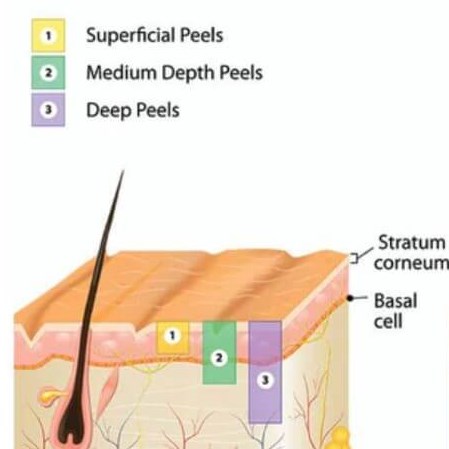Chemical Peels: A Beginner’s Guide
6/9/2025
What is a Chemical Peel?
Chemical peels often use a combination of acids and complimentary ingredients. This takes advantage of the skin’s natural ability to heal itself, promoting skin cell turnover with “controlled damage." Topical acids work by breaking down the bonds that hold dead skin cells together, allowing the surface layer of your skin to safely peel away- revealing the healthy and radiant complexion beneath.
At Georgetown Allure Medical Spa in Washington, DC we typically recommend three sessions, one month apart. Memberships are available to make your treatment plan affordable, which is tailored by your Medical Aesthetician to best meet your unique aesthetic goals. Learn more about our memberships here.
Benefits
Hyperpigmentation & Dark Spots
Cell turnover fades discoloration and post-inflammatory hyperpigmentation.
Fine Lines & Wrinkles
Stimulates Elastin Fiber and Collagen production to diminish signs of aging.
Acne
Reduce acne breakouts, remove clogged pores and minimize acne scars.
Uneven Texture
Exfoliate away rough or bumpy skin to reveal a silky and soft complexion.
Strengthen
If your skin is sensitive, it will become less reactive over time from regular peels. Your skin cells will become stronger, healthier and more tolerant.
Superficial Peels
Superficial peels remove all, or part of, the Epidermis, which is the top layer of skin. Allows you to benefit, often without downtime or physical signs of peeling. This also includes at home skincare products like Salicylic Acid, Retinol and Glycolic Acid. Add a superficial peel to any facial, includes our Glycolic Peel Add On and AHA Vitamin C Peel Add On. Learn more about our facials here.
Medium Depth Peels
Medium depth peels reach the Epidermis and upper Dermis. Downtime offers quicker results, as gentle physical peeling significantly boosts your collagen production to offer you more significant results. Includes our Vitalize Peel and TCA Peel.
Pre Care
Three days prior to your appointment, hydration and protecting your skin is the key to healing properly. Only use a gentle cleanser, hydrating moisturizer and Sun Protection. SPF 50+ is recommended. Discontinue any form of exfoliation or Vitamin C during this time to avoid an adverse reaction.
Post Care:
Do not touch your face until 24 hours after your treatment. Once 24 hours have passed, wash your skin with a gentle cleanse. Pat your skin dry with a clean towel, and avoid rubbing or scrubbing your skin. Apply a hydrating moisturizer and sun protection. This is your morning and evening routine for one week after your chemical peel. Peeling begins 2-3 days after your appointment, which typically resolves within 5 days after treatment. If you experience an uncomfortable reaction, you may apply extra moisturizer, a cold compress or hydrocortisone cream for relief.
TCA
Trichloroacetic acid “TCA” breaks up keratin, a protein found in the skin.This causes the keratin to stop functioning properly, lighten in color and peel away from the skin over the course of several days.
Salicylic Acid
An anti-inflammatory which diminishes skin debris that lead to acne, clogged pores and blackheads. Inflamed, red and pustule pimples go away quicker when this is used regularly.
Kojic Acid
A skin lightening ingredient from mushrooms, which best treats melasma, age spots and sun damage.
Retinol
A form of Vitamin A, which exfoliates your skin and increases collagen production, which can reduce the appearance of fine lines and wrinkles, giving your skin a fresher, plump appearance.
Lactic Acid
Increases cell turnover, which eliminates accumulated dead skin cells on the surface.
Malic acid
Found in many fruits and vegetables, which boosts hydration and gently exfoliates.
Glycolic acid
Targets dark spots and discoloration by weakening the bonds between cells in the outermost layer of the skin.
Mandelic acid
Loosens the bonds that adhere the dead or old skin cells to the skin surface. This helps shed old, dryer skin cells to reveal new smoother skin cells.
Hyaluronic Acid
Ironically, this ingredient does NOT exfoliate your skin. A molecule of hyaluronic Acid holds 1000X its weight in water. It pulls water from the air, into your skin. It’s a great ingredient to apply before and after your chemical peel to deeply hydrate.
Call (202)980-1798 to speak with a skin specialist and learn which chemical peel is best for you!
&srotate=0)